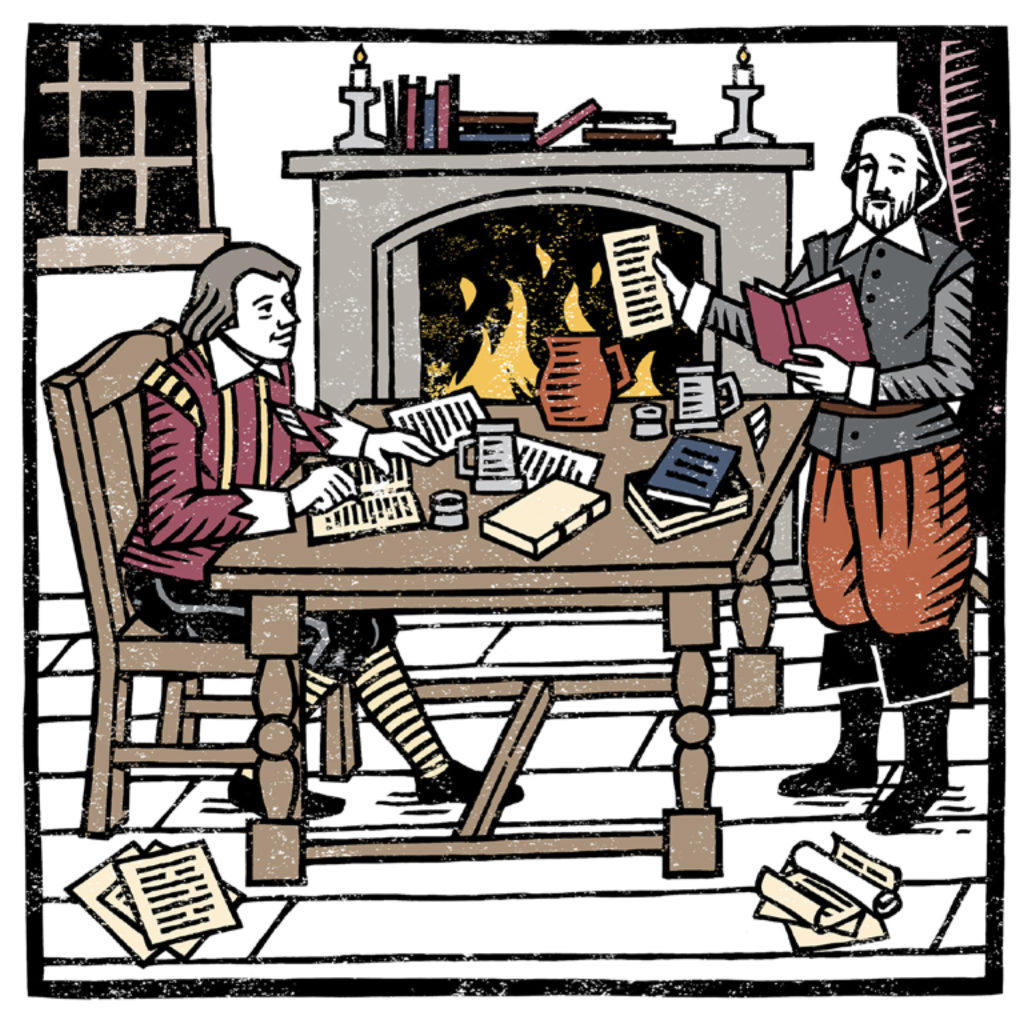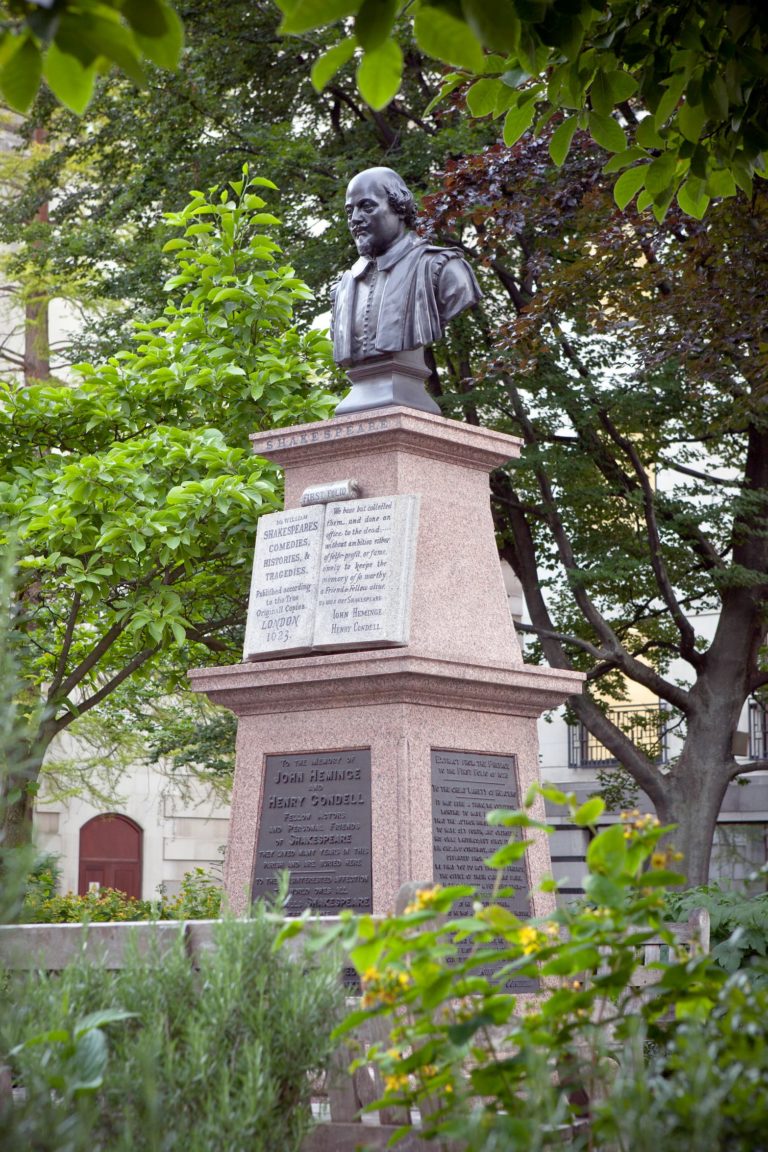
‘cured and perfect’
John Heminge and Henry Condell despaired at how Shakespeare’s plays had been ‘abused’, ‘stolen’, ‘maimed’ and ‘deformed’, in previously printed versions.
As editors of the First Folio, they aimed to take the same care with the texts as Shakespeare would have taken himself. And maybe more.
Their greatest roles
For many years, Heminge, Condell and Burbage all worked together with Shakespeare in the King’s Men acting company. Burbage was the star, and was the first to perform Hamlet, King Lear, Richard III and Othello. Condell probably appeared in all of Shakespeare’s plays as a co-leading actor, while Heminge helped in the administration of the company, alongside smaller acting roles. All three were name-checked in a poem written when the company’s theatre, the Globe, was destroyed by fire in 1613.
These actors were the most-qualified stakeholders to edit the scripts, and provide an authoritative version. Burbage died in 1619: we don’t know how much involvement he had in preparing the scripts, but as the company’s leader, it is likely he initiated the project.
Without doubt, Heminge and Condell were the principal editors. They used promptbooks and manuscripts from the King’s Men – and possibly from Shakespeare’s family in Stratford-upon-Avon. They also consulted existing editions, correcting and editing them. We can imagine them comparing the playwright’s drafts, neat copies, previous editions, their own handwritten parts, and perhaps their own vivid memories. Their aim was to achieve the best representation of the author’s intentions.
Half of the plays in the First Folio had never been printed before. They may never have survived. Heminge and Condell’s role in preserving Shakespeare’s work was celebrated in 1896 by a statue in the City of London – a rare example of a monument for a book; the book that became a monument to its author.




